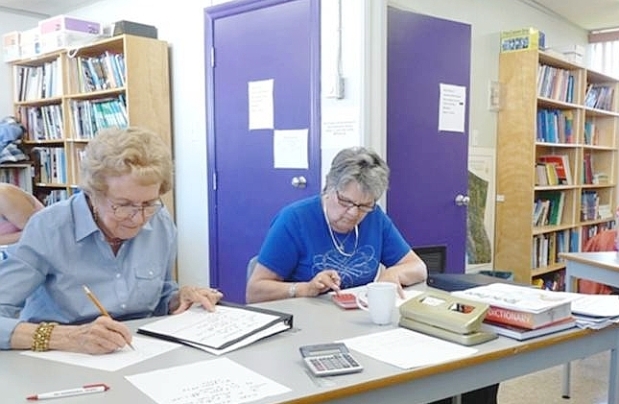We’ve discovered so much more nowadays about how we learn. We know that hands-on active learning works and that learning is a social process.
“Today’s learners – whether they are 18, 22, or 55 (or 89) – favour active, participatory, experiential learning – the learning style they exhibit in their personal lives,” education thought-leader Dr Diana Oblinger says.
Learning is learnable, regardless of age
Intelligence is not fixed at birth and in the era of lifelong learning there’s a very broad set of skills we need in life, which can be learned, author of Power up your mind, Bill Lucas, says. These skills are resourcefulness, remembering, resilience, reflectiveness and responsiveness. Lucas describes intelligence as “what you use when you don’t know what you want to do.”
In the past, scientists thought once a person is an adult, their cognitive ability is decided. But there’s plenty of evidence now to show that the brain is constantly changing in response to experiences. It is constantly creating new neural pathways or re-setting existing ones in response to environmental changes, physical injuries, new learning and new behaviours.
The mapping of London taxi driver’s brains show how years of rigorous training could leave it’s mark on the brain, Luminoisty.com reports. The 16 drivers (who’d spent years navigating London’s streets) had larger hippocampuses – the brain-area in charge of memory and navigation – than a control group of 50 healthy males.
The taxi-driver’s brain survey clearly shows how the brain physically responds to circumstances and this prompts the thinking, is it possible to direct that capacity for change and target improvements in specific abilities? Cognitive training seeks the answer and offers a wide of tools, with more study results emerging.
“We all need to “learn to learn” and to do that we need to be in the right emotional state. “Most importantly you need to have actively switched on your mind, ” Lucas says. Then, once we have learned something you need to be able to adapt it to your everyday life.
Overcoming barriers
Barriers to learning in mature-age include life’s pressing tasks. But it is crucial to set aside small (but regular) time-slots devoted to learning, Lucas points out. It is also important to know what kind of learner you are and how you prefer to take up information, then seek out this style, he says. Sharing your thoughts and feelings openly is also important as it builds confidence.
You are never too old to learn.
Cathleen Eddison, 89 (on the left in the photo) may be the oldest person every to graduate high school. “My daughter and son are over-the-moon thrilled, they are so proud of me — that’s what keeps me going in maths,” she says.*
Teacher Ray Steigvilas, 60, said his three senior students are all maintaining at least a B average in their most challenging course. “They haven’t done maths for a long time, so we’re having to scratch the surface and then climb quite rapidly through the level, ” Steigvilas said.
“It creates a different atmosphere when they’re here,” he said. “(The teens) see the value of education as soon as they see the older people coming in here and basically doing what they’re doing. “Their behaviour seems like it changes. It encourages them to work a little harder.”
Even with only half our brain cells we have more than the neural capacity that we need, Lucas notes. Learning is more about the patterns between brain cells than the number of cells we have. “You were born able to learn.” Mentally re-hearsing will help and positive re-inforcement from yourself. “You are learning all the time without realising it,” Lucas says.
Never mind the fear of failure. “Nine times out of ten people around you end up admiring what you are doing.”
Here’s to grit and determination.
For some inspiration visit www.ala.asn.au/
For more information about cognitive training: Lumosity scientists and outside collaborators contributed to the Clinical Trials research effort and so far, 7 peer-reviewed studies have been published using Lumosity as a cognitive training tool for diverse populations, including healthy adults, cancer survivors, elderly people, and children with a genetic disorder. Visit www.lumosity.com
*Photo: Cathleen Eddison, 89, and classmate Adriana Peters, 80, study at the Agassiz Centre for Education. For the story see www.vancouversun.com/







5 Comments
Find out more about says:
August 7, 2014 at 1:32 pm
Appreciating the commitment you put into your site and in depth information you offer.
It’s good to come across a blog every once in a while that isn’t the same out of date rehashed material.
Excellent read! I’ve bookmarkjed your site and I’m adding
your RSS feeds to my Google account.
excellent says:
August 17, 2014 at 11:20 pm
Your style is really unique in comparison to
other people I have read stuff from. Thanks for posting when you
have the opportunity, Guess I will just book mark this blog.
McLean Roofing and says:
August 18, 2014 at 2:57 am
Pretty section of content. I just stumbled upon your
blog and in accession capital to assert that I get actually enjoyed
account your blog posts. Anyway I’ll be subscribing to your feeds and even I
achievement you access consistently rapidly.
Customized Titleist says:
August 18, 2014 at 3:21 am
This piece of writing will assist the internet visitors for
building up new webpage or even a weblog from start to end.
cigarette says:
August 18, 2014 at 2:48 pm
Excellent, what a web site it is! This weblog provides helpful data to us, keep it up.